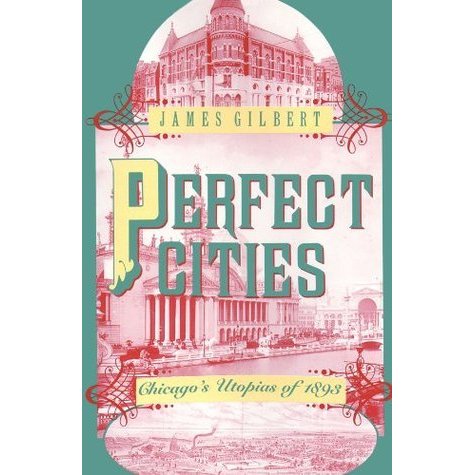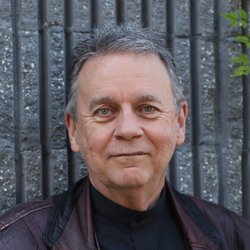The book profiles the several Chicagos that co-existed in 1893 when the World’s Columbian Exposition (the official shortened name for the World’s Fair: Columbian Exposition, also known as The Chicago World’s Fair and Chicago Columbian Exposition. Against the odds, Chicago wrested the right to hold the Fair from New York City. The sniping from New York City was without end.

I saw a miniature replica of the White City of the Chicago World’s Fair at the Durham Museum in Omaha a few years ago. I had forgotten that sight until I read this book.
The White City that was the heart of the Exposition. All of its buildings were neoclassical in style, plastered in a shining material, and painted white. In addition, outdoor lighting, including street lighting, was used extensively as electricity was promoted as the future. Some things are not said. The White City was a front in the contest between direct and alternating current electricity which Nicolas Tesla eventually won, though Thomas Alva Edison, who lost, made the money. The White City was not only painted white so as to gleam and glisten in the sunshine, but also to reflect the light of the electric lamps throughout. It was brighter at night than on many a dreary day. Also unsaid is that the White City was the site of the first labeled serial murderer who stalked victims in the nocturnal White City, a fact suppressed at the time in the interest of keeping the 27 million tourists coming. Yes, 27,000,000. The Fair was intended to showcase the arts, industry, and science, but most of all to showcase Chicago as a city of the future. In cooperation with the railroads, the Fair was a tourist attraction that brought tourists from far and wide, e.g, 25,000 from Connecticut alone.
By the way the construction was largely intended to be temporary. In any event nearly all of it burned down in two fires in 1894 and 1895. One building made to last remains and that is the Field Museum endowed by Marshall Field of the department store that has been subsumed by that orca of department stores, Macy’s, once confined to Fifth Avenue, it now roams the retail waters everywhere.
To make travelling easy, many guidebooks were published and distributed widely, sometimes freely. The author’s analysis of what these guidebooks include and do not include is clever, creative, and informative. Like the Fair itself, they emphasise the future and disregard the past, in their case the real city of Chicago with tenements, union unrest, child labor, alcoholism, and disease, still less the stockyards, of which nothing was said. We have also noticed how contemporary guidebooks handle the darker side of things, and the differences among guidebooks when we have consulted more than one.
By the way the World’s Fair was called that because one of its founding and long term sponsors was the newspaper the ‘New York World’, which also sponsored later the baseball World Series, and hence the origins of that name, too, neither being the example of parochial American imperialism that pin heads often assume.
One of the cities is Pullman Village, built by the railroad entrepreneur George Pullman whose business model was to sell comfort and luxury, and micromanage to achieve it. His underlying thesis was that salubrious surroundings would bring out the best in people, a common belief in the Victorian Era. If we want to stop men spitting, then lay down carpets and they will not spit. All of this was designed to encourage women to travel, too, and ergo to encourage families to travel together. That was also part of his thinking, men travelling with families would act better than men travelling among only other men. The locker room versus the tea party, that might be the comparison. (That was the reasoning when dormitories on college campuses went co-ed. It would lead to improved behaviour among the lads. Wonder if anyone has collected evidence on that one?)
His business model was this: he leased his sleeper, lounge, kitchen, and dining cars to railroads; he did not sell them. With these cars went Pullman’s staff: porters, chefs, waiters, conductors, who were trained in his approach to courtesy and service. No matter which railroad, a Pullman car offered the same service, accommodation, food, and so on.
He also thought he could shape his workforce just as he hoped to shape his clientele, so he built the Pullman Village around the factory where the railway cars were built, and offered a very good standard of housing, shopping, access to fresh food, schools, theatre, exercises for the family together and so on. Nothing is said, but I assume it was racially segregated. Indeed virtually nothing is said about race.
By the way Pullman was inspired to build this village by a visit to Saltaire in Leeds. Titus Salt was in turn inspired by William Morris and Robert Owen, important figures in the utopia tradition.
Paternalist that he was, Pullman could not abide growing unionism in railroads, sometimes led by Eugene Debs, and his intransigence precipitated that infamous Pullman Strike in 1894 that led to the ruin of his company. In sum, times turned down, Pullman cut wages by a third but would not reduce the rent he collected from workers in the Village. Of course others lost their jobs and with the loss of the job they also lost the housing in the Village. He would not compromise one inch and even the local newspapers owned by his peers and friends turned against him. Nonetheless, the incompetent Grover Cleveland turned the army loose. Douglas MacArthur was there, practising for his later efforts at Hooverville.
Another of the cities is Harvey Illinois which was also a planned workers’ community inspired by the evangelist Dwight Moody. Moody was a major figure in the region, in part, because he was more pragmatic about entertainments like music, singing, and dancing than many of the Elmer Gantry rivals. The robber baron Turlington Harvey built Harvey under his influence. When Harvey lost interest it quickly reverted to the norm.
One of the most interesting but hardest to fathom parts of the book is the account of The Midway which, I think, was the fun fair associated with the Exposition. It offered cultural variety and light entertainments, approved by a board of elders. Perhaps I blinked too many times, but I never did grasp the author’s point in the recurrent references to it.
 James Gilbert of the University of Maryland
James Gilbert of the University of Maryland
The author uses the words ‘utopia’ and ‘utopian’ a number of times without stipulation. The only meaning I can read in his use is planned, on the assumption that a well planned city will continue in the way planned. Of course the White City was also built, perhaps, metaphorically to usher in a spotless future. Pullman and Harvey were built to promote certain kinds of better conduct, and that is part of the promise of utopia, but better is very limited to sobriety, courtesy, work ethic, and so on.
I read it in anticipation of spending a week in Chicago in March 2016.
On the murders see ‘The Devil in the White City’ (2004) by Erik Larson.
Skip to content
